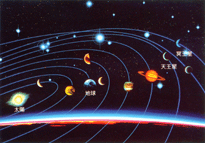 |
- Discovered by the research group of University of California, led by Dr.Glenn
T.Seaborg.
- Named "Plutonium" in 1942 after the planet "Pluto", which was found at the
same period.
- Plutonium one gram generates 2000 litre of oil, three ton of coal.
- Possessed quantity of plutonium in the world as of 2002:
Commercial use: 850 ton (Equivalent to 200,000 ton of natural
uranium).
Military use: 250 ton (Equivalent to 60,000 ton of natural
uranium).
- Consuming quantity of natural uranium in the world:
61,000 to 63,000 ton per year
* Uranium was named after the planet "Uranus"
|